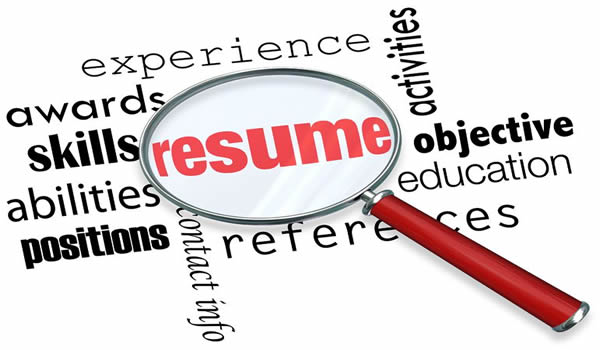How to write a resume
Often, it takes no more than a moment for a recruiter to make a “yes” or “no” decision on your application. With a quick glance, either captures recruiters attention or going on a pile refuse. A well-written, professional resume is part of some art and science. How well do you combine the two pieces of an important role in how it is obtained.
Types and Best Practice Advice
Most resumes follow a chronological or functional format. Although the chronological style is widespread, new graduates, career changers and people re-entering the labor market more can enjoy the use of a functional format. The difference is that a chronological resume highlights work history and past career accomplishments, while a functional resume highlights your skills and education.
some best practice guidelines apply regardless of which format you choose.
This includes:
Keep your resume to no more than one page.
Concise text is important, so give information possible about the fewest words. For example, enumeration using lists with descriptive statements instead of complete sentences. but, not sacrifice, which means to achieve conciseness. Do not use abbreviations or acronyms.
Spelling addresses, titles and names of schools and businesses.
Use verbs tense in the right to describe your skills, abilities and previous or current job duties. For example, describe the current job duty with a statement such as “Manage accounts payables and receivables.” Describe a past job duty with a statement like “organized thousands of patient records and maintains a database of confidential patient information contains.”
Do not use first-person pronouns like I, me and my. For example, instead of starting a sentence with “I”, start it with a statement such as “Four years of experience in …”
Do not overdo, and do not contain information on your resume that a recruiter can not check.
Make your resume visually appealing.
Margins should be consistent and between one-half to one inch. The font size should, with headings no longer to be a professional font such as Times New Roman or Helvetica 11 or 12 than 16.
Choose Writing and editing your resume until it is perfect. the heading
There are no exact rules for formatting the header section of a resume. but, it should be visually appealing and easy to read. The header should include:
- Your full name
- E-mail address
- mailing address
- Telephone number or numbers
- formatting
Share your resume in sections, starting with a professional overview.
Kimberly Myers, a training and coaching professionally, recommends that this instead of an objective to use, because it keeps the focus on employers’ needs, not your needs.
Professional Summary
Summarize your background and qualifications in terms of how they can benefit the employer and the work in no more than about three sentences or bullet points. See and use words in the job description included.
Professional experience or skills and abilities
With a chronological resume, list work experience in reverse order to the recent experience of the most important.
with a functional resume, organizing skills and abilities on the type. For example, include sub-sections such as “Accounting”, “organization and planning” and “customer service and support.”
education
List the school your studies, the month and year you graduated and academic performance, the subject of the profession.
employment History
List the position title, company and employment data in years.
credentials
Maintain integrate a list of at least three current references, but not the list on your resume. Instead, list references on a separate piece of paper, like you, comprising the same position your resume.
If a job description specifically mentioned references, it is not necessary to make a statement on your resume as “references upon request” belong.

How To Write A Resume | Monster.com

What’s Your Biggest Challenge When Writing or Updating Your Resume?

Writing Your Resume in Four… | National Theatre for Student Artists

Resume Writing: 10 Practical Formatting Tips Megan Dredge

Resumes Strateg Writing Your Resume As Service How To Write Work

The Art of Writing a Perfect Resume

